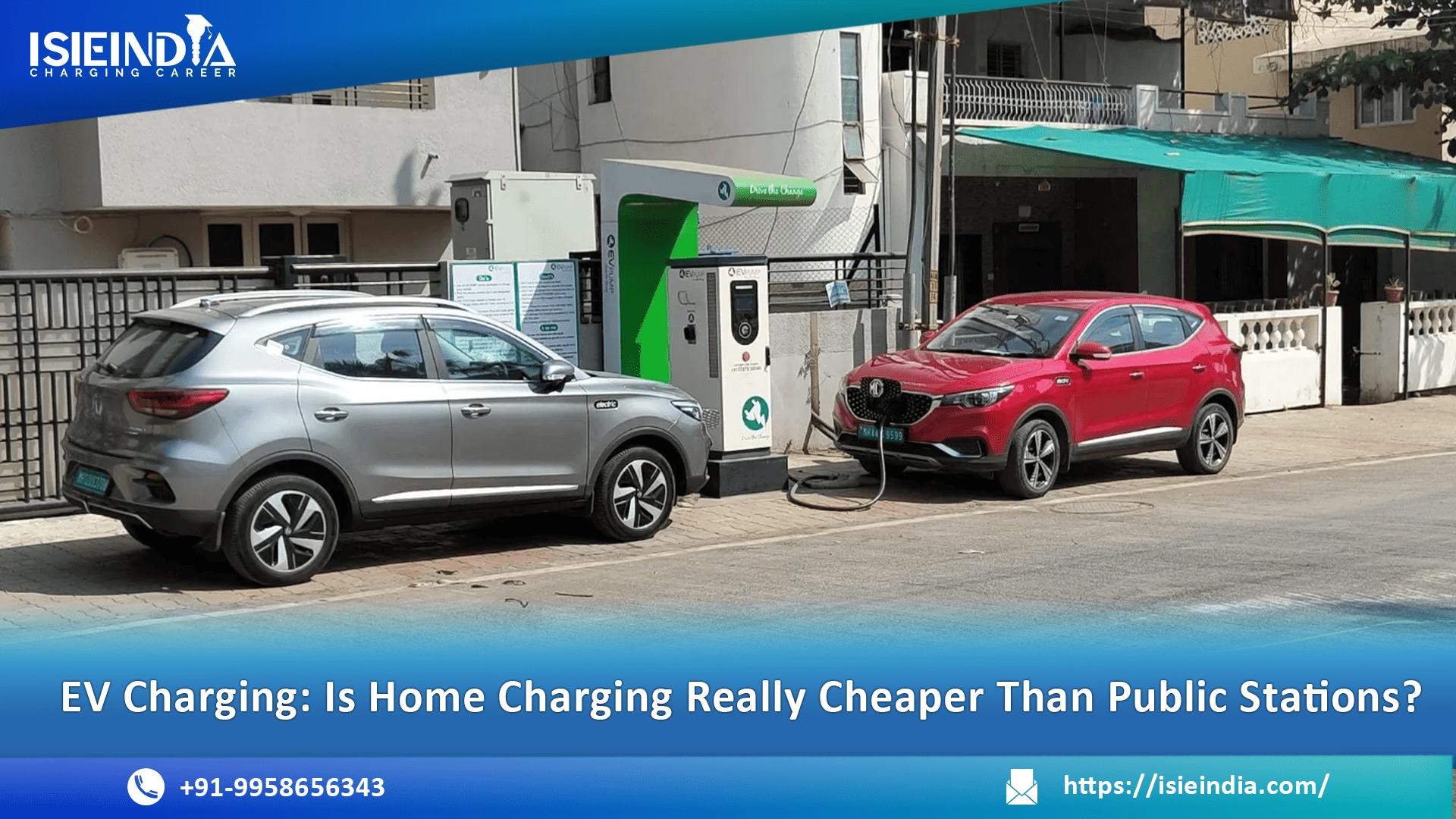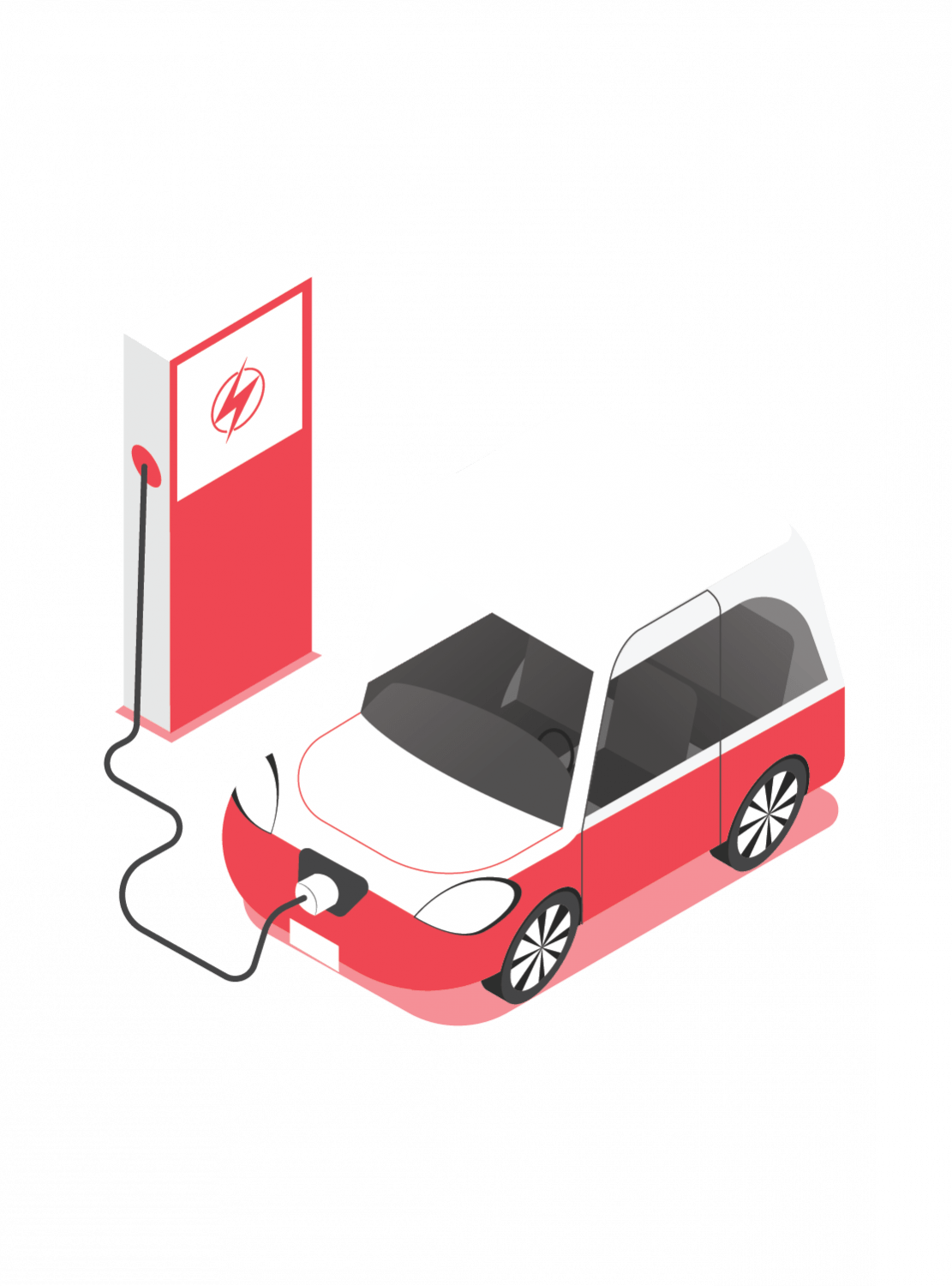EV Charging: Is Home Charging Really Cheaper Than Public Stations?
As India’s push toward electric vehicles gains momentum, a common question for most EV owners is:
“Should I charge my EV at home or at a public charging station?”
Both ways have advantages and disadvantages, but when it comes to being cost-effective, the difference can be substantial. Let’s examine the economics of EV charging — at home versus at public stations.

Home EV Charging: Easy, Slow, and Budget-Conscious
How It Works:
You install a wall-mounted AC charger (typically 3.3kW–7.4kW) at home. You simply plug in your EV overnight, allowing for slow and steady charging.
Cost Breakdown (India Average):
-
Electricity Rate (Residential): ₹6 to ₹8 per kWh
-
Battery Capacity Example: 30 kWh
-
Full Charge Cost: ₹180–₹240
-
Range Delivered: ~250–300 km (based on model)
Pros:
-
Cheaper per unit electricity
-
Convenient for overnight charging
-
Safer with low-voltage, consistent input
-
One-time charger installation
Cons:
-
Slower charging (6–10 hours)
-
Not practical for users without dedicated parking space
Public EV Charging Stations: Speedy but Pricey
How It Works:
Public charging stations use DC fast chargers (ranging from 15kW to 120kW), which can charge your EV up to 80% in under 60 minutes.
Cost Breakdown (India Average):
-
Charging Rate: ₹18 to ₹24 per kWh
-
Full Charge Cost (30 kWh): ₹540–₹720
-
Charging Speed: 30–60 minutes for ~80%
Pros:
-
Fast turnaround for quick charging
-
Widely available at malls, highways, city centers
-
Best for emergencies or long-distance travel
Cons:
-
Higher cost per unit
-
May involve wait times and availability issues
-
Occasional compatibility issues with older EVs
Real-World Example: Which One Saves You More?
If you charge at home regularly, your monthly electricity bill for EV charging may be under ₹1,000 for standard city use.
However, if you depend solely on public fast chargers, your monthly charging cost may rise to ₹2,500–₹3,000, or even more.
That’s nearly 3x the cost!
The Smart Strategy: Hybrid Charging Approach
The best way to balance cost and convenience?
- Use home charging for daily commuting
- Use public fast chargers for long drives, emergencies, or travel
This hybrid approach not only helps save money but also prolongs your battery’s health by minimizing fast-charging cycles.
Conclusion
Both charging methods serve different needs —
But when it comes to long-term savings, home charging is significantly more affordable.
If you own an EV and have a parking space, installing a home charger is the smartest financial choice you can make.
Want to Learn More?
Have questions about:
-
EV lab setups?
-
Smart charging systems?
-
Career opportunities in electric mobility?
Follow ISIEINDIA — your partner in building India’s clean tech future.
🔗 www.isieindia.com




